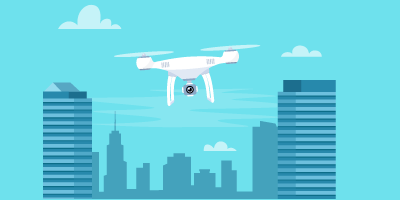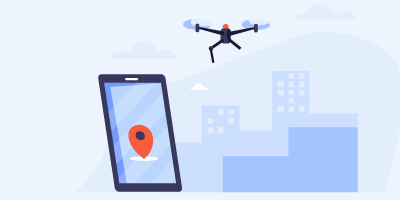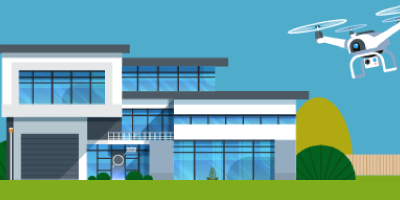As many drone pilots are aware, the FAA Reauthorization Act of 2018 was recently passed and signed by the president. While the full bill has a lot to unpack, subtitle B focuses on unmanned aircraft, AKA: Drones. This act was originally a source of concern by community-based organizations (CBO’s) such as the AMA (Academy of Model Aeronautics) and AOPA (Aircraft Owners and Pilots Association) as well as hobbyist and commercial pilots alike. After discussion and further interpretation, the law is not quite as scary as it sounds. The FAA Reauthorization Act puts timelines on some very exciting new developments such as UTM and authorization for drones to be used to carry property for compensation. (Hellooo drone package delivery!)
The original reason for concern with the law was that it was going to require licensing for hobbyists which would restrict them to specific operating areas, creating a slippery slope to slowing and/or eliminating the recreational drone market. The AMA and other community-based organizations made their concerns heard and the FAA has agreed to consult and collaborate with them during the development of the programs required in the law.
In a nutshell, the rules restrict hobbyists to some of the same standards that Part 107 commercial pilots are already required to follow. The law before was that they had to fly under the safety guidelines of a CBO, but the definition of such was not very clear. The new rules restrict hobbyists to fly within visual line of sight, under 400 feet above ground level, and they must get prior authorization before flying in restricted airspace. It also requires that hobbyist pilots pass an aeronautical knowledge and safety test, which possibly could create a barrier to entry, depending on the pilot and the requirements of the test. You can see the full list of guidelines in Section 349 of the FAA Reauthorization Act.
With these new rules, a lot of people are asking how they will be enforced, as currently there is no reliable way to actively track drones. In Section 372 of the act, you can see the enforcement clause. This is where Remote ID is going to come in. If you read our most recent post about our pilot’s experience at InterDrone you can get an introduction into Remote ID and the part it will play in the future of drones. Remote ID is described as an electronic license plate, similar to what you see on cars. Each one will be unique and will provide the info on who it is registered to. This will also use some kind of detection technology to assist in making the drone visible to manned aircraft to increase safety.
While these rules may seem daunting, it is important to remember that drones are being used by so many more people than anticipated. There are currently 1.2 million registered drones in the US according to Derek Kan of the Department of Transportation in his keynote presentation at InterDrone. If there is one thing that this act proves, it is that drones are here to stay and that it is for the benefit of everyone that we keep the laws moving at the pace of innovation. We have been excited about the developments that are projected to come, and this act puts a tangible timeline on when to expect them.
Happy flying!
View the full bill here: https://www.congress.gov/115/bills/hr302/BILLS-115hr302enr.pdf
Related articles
6 Major Industries That Benefit from Drone Services
A look at how six major industries, such as real estate, eCommerce, and construction, can leverage the benefits of drone services.
Remote ID for Drones: All You Need to Know
In this blog post, we provide a guide to remote ID for drones, including how drone pilots can ensure compliance with the FAA remote ID rule.
Real Estate Drone Photography: Top 3 Benefits and Considerations
In this blog post, we’ll discuss the benefits of real estate drone photography & things realtors should look for when hiring a drone pilot.




